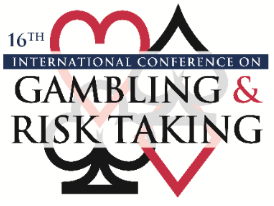Submission Title
Session Title
Session 2-4-C: Using New Theories and Methods to Understand the Gambler
Presentation Type
Event
Location
The Mirage Hotel & Casino, Las Vegas, Nevada
Start Date
8-6-2016 2:00 PM
End Date
8-6-2016 3:30 PM
Disciplines
Mental and Social Health | Psychology
Abstract
The theory of planned behaviour (TPB) and the concept of negative anticipated emotions (NAE) have attracted research attention in the formulation of effective preventive interventions. This approach has identified several key constructs of the TPB (i.e., intentions, attitudes, subjective norms, perceptions of behavioural control) and NAE as valid predictors of gambling behaviours and problems among young people (Martin et al., 2010, 2011; St-Pierre et al., 2015). However, no empirical investigation has utilized all of these constructs in the design or evaluation of an adolescent problem gambling preventive intervention. The current research aimed to assess the efficacy of targeting NAE and key TPB constructs in a prevention video for modifying gambling beliefs, intentions and behaviours. A sample of 280 high school students were randomly assigned to either an intervention or control condition. Participants were assessed at pre-intervention, post-intervention, and at three-month follow-up. Results suggest that the video, delivered as a universal preventive intervention, may be insufficient for modifying NAE and other TPB key constructs, or for changing gambling behaviours over time. Important implications of the findings for future research and prevention work are discussed.
Keywords
adolescents, problem gambling, prevention, theory of planned behaviour, negative anticipated emotions, narrative communication
Included in
Exploring the Utility of an Extended Theory of Planned Behaviour Framework for School-Based Gambling Prevention Programs
The Mirage Hotel & Casino, Las Vegas, Nevada
The theory of planned behaviour (TPB) and the concept of negative anticipated emotions (NAE) have attracted research attention in the formulation of effective preventive interventions. This approach has identified several key constructs of the TPB (i.e., intentions, attitudes, subjective norms, perceptions of behavioural control) and NAE as valid predictors of gambling behaviours and problems among young people (Martin et al., 2010, 2011; St-Pierre et al., 2015). However, no empirical investigation has utilized all of these constructs in the design or evaluation of an adolescent problem gambling preventive intervention. The current research aimed to assess the efficacy of targeting NAE and key TPB constructs in a prevention video for modifying gambling beliefs, intentions and behaviours. A sample of 280 high school students were randomly assigned to either an intervention or control condition. Participants were assessed at pre-intervention, post-intervention, and at three-month follow-up. Results suggest that the video, delivered as a universal preventive intervention, may be insufficient for modifying NAE and other TPB key constructs, or for changing gambling behaviours over time. Important implications of the findings for future research and prevention work are discussed.

Comments
Attachment: PDF containing 37 slides